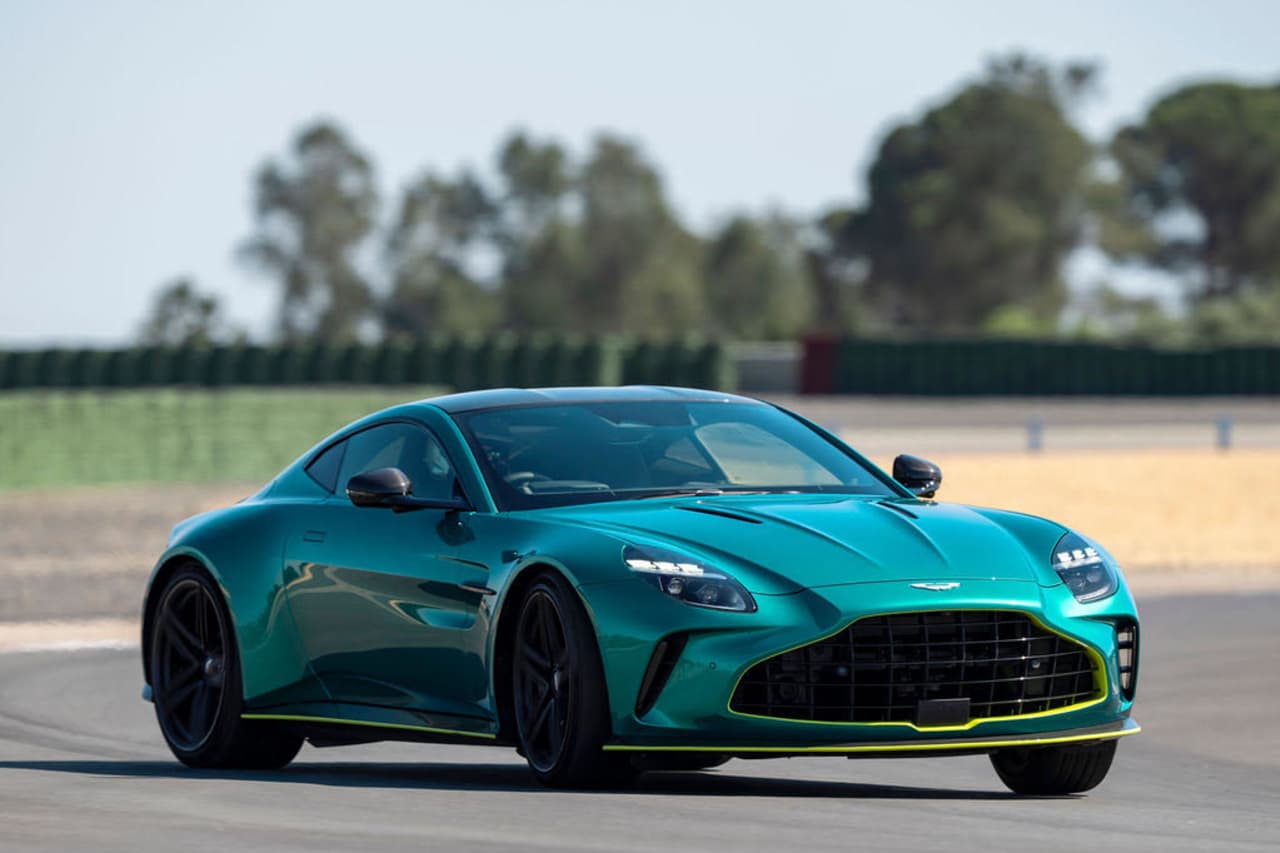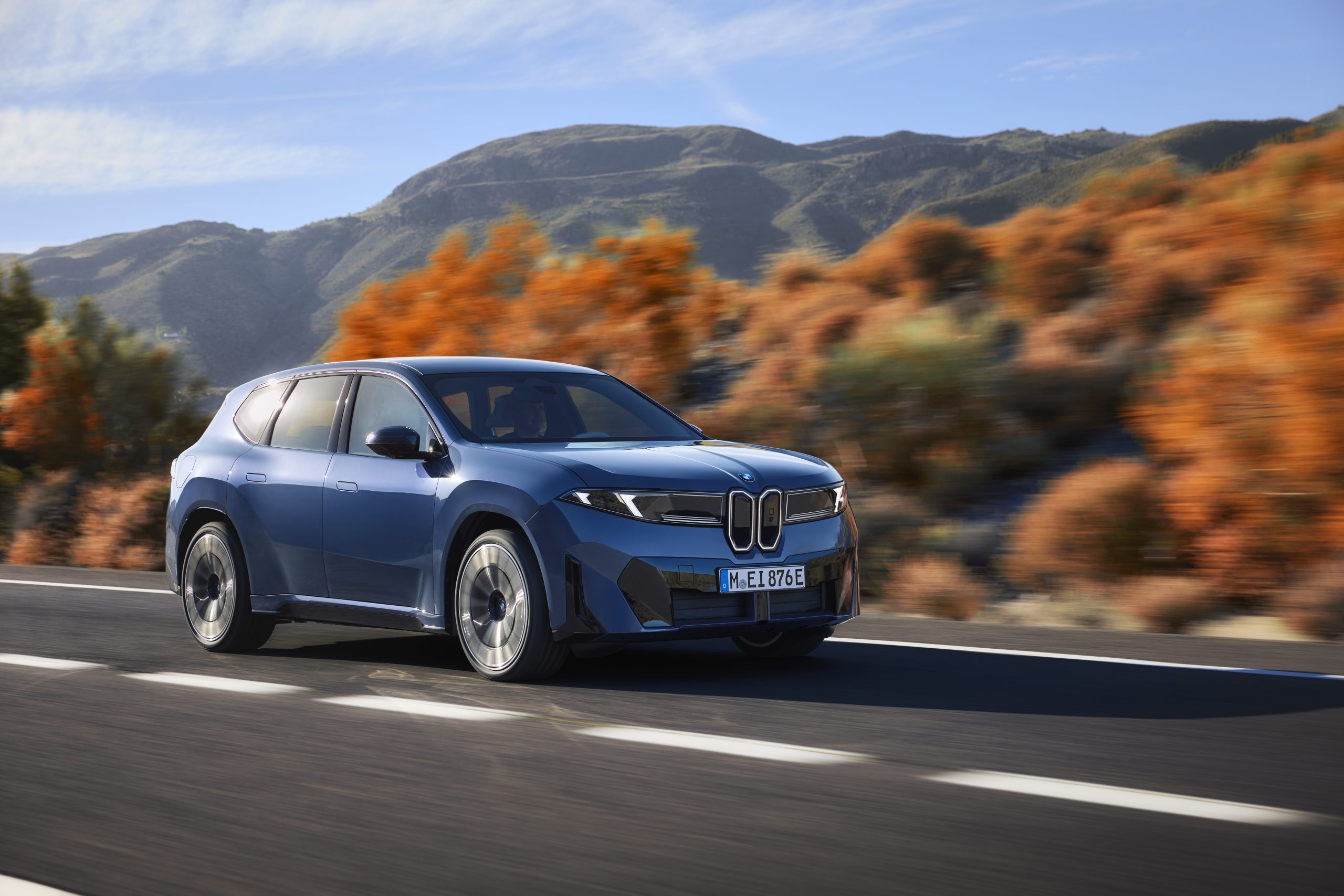Aston Martin’s Muscular Vantage Is a Combination of Sophistication and Aggression
Aston Martin builds all of its cars with a peak blend of performance and luxury. Still, their six-figure creations can lean more aggressively into one side or the other of that simple recipe.
For example, the DBD707 SUV hides a 4-litre V8 engine capable of 697 horsepower, but its overall size and endless creature comforts nuzzle a little closer to luxury’s embrace. The small-batch Valour muscles up on the performance scale with its prized manual transmission and 5.2-litre, 705 horsepower V12 power plant. Meanwhile, the recently redesigned DB12 is the company’s best attempt at splitting the performance-luxury gambit right down the middle.
Amid all of those supercar machinations, the Aston Martin Vantage sneaks away to play as the most performance-centric car coming out of the Gaydon, England, factory. Redesigned for 2025, the US$191,000 coupe reasserts itself as the most dedicated “driver’s car” in a very driver-friendly line. Should this be in pounds first?
During a road drive and speed testing event at Spain’s Circuito Monteblanco about an hour outside of Seville, the new Vantage proved itself as Aston Martin’s most accessible track-day companion.

A first look at the latest addition to its very elite Warwickshire family pulls the eyes right to the newly extended rear wells that jut out around 21-inch, forged alloy wheels. While widening the car’s haunches, the wheel positioning reduces unsparing weight and gives the new Vantage a much more athletic pose.
Beyond that muscular base, the Vantage continues the modern Aston Martin styling tradition of riding the razor’s edge between aggression and sophistication. While the car’s Italian and Swedish rivals opt for prominent fins and big scoops, Aston’s designers keep the lines low, wide, and balanced from the signature highlighted grille to the understated aerodynamic spoiler.
In the performance specs department, the Vantage now packs an AMG-built, 4.0-litre, V8 twin turbo, front-mid mounted engine, capable of 656 horsepower, and a top speed of 202 miles per house and a 0 to 60 mph time of 3.4 seconds.
According to James Owen, Aston Martin’s senior manager of Vehicle Engineering, if the DB12 is the automaker’s distinguished overachiever, the Vantage is its less responsible, but equally attractive pugnacious sibling.
“The DB12 is a sports tourer and is positioned in the market as a GT,” Owen says. “It’s important for us to differentiate between Vantage and the DB12—to make sure that difference is clear for buyers and enthusiasts”
Owen describes the larger, pricier DB12 (starting MSRP of US$245,000) as more refined, while he considers the 2025 Vantage as playful and passionate. He even uses the word “brutish,” if such a term can be used for a technology-stuffed, six-figure sports car.
“The word that we keep hearing when talking about the Vantage is ‘fun,’” Owen adds. “That’s what we wanted to hear. We wanted to create a car that pulls at the heartstrings because it’s so enjoyable to drive. But, we wanted it to have a challenging character to it.”
Previous versions of the Vantage fit that punkier image. While always built for speed and powerful acceleration, the last couple editions of the Vantage were a little more harsh. The steering seemed more aggressive—demanding more input from the driver. The suspension felt tighter, deliberately transmitting more of the road’s surfaces and imperfections into the driver’s backside. If any current car in the Aston Martin line is a direct descendant of the automaker’s racing pedigree at Le Mans or in F1, it’s the Vantage.
Still, amid all this talk of driving fun and racing performance, Owen is quick to remind drivers that the Vantage is still an Aston Martin— steeped in the company’s signature identity of sophistication as the grownup’s more dignified supercar.
“The Vantage also has that added feature in its wheelhouse,” Owen explains. “Yes, it will respond to a driver pushing it in a racing scenario, but—with the technology we built into the car to stabilise the body at its most comfortable driver mode settings – the Vantage is still a very pleasant place to be.”
In keeping with such pleasantness, the interior of 2025 Vantage bears no resemblance to any race car. Handmade and stitched Haircell Leather stretches in all directions in any colour the buyer prefers. The Sports Plus Seats are 8-way adjustable with heat or cooling on demand. The complete infotainment suite featuring the official Aston Martin Audio system from Bowers & Wilkins is a step up from the previous Vantage (and the current DB12).

Once the internal comforts and engineering feats come together, the experience behind the wheel is a sensual union of car and operator. Acceleration is smooth, yet immediate. The cornering is focused and nimble, and its rear-wheel drive allows for just enough play for the occasional drift at speed in turns.
A key piece of Aston Martin technology makes the Vantage’s elite performance potential accessible to more drivers. The ESP System (Electronic Stability Programme) debuted in the DB12, and the Vantage adopts the tech to its driver mode system. ESP takes information from multiple sensors around the vehicle, feeding the accelerometer data into a computerised concept of the car’s driving conditions and the ability of the operator.
Resulting algorithms react to those conditions, road surface issues, available grip, etc., tightening up the vehicle where necessary to aid the driver and offer as much feel and performance as the given operator can manage.
In its completed package, the 2025 Vantage is aimed at a specific buyer demographic—the driving enthusiast who puts thrills ahead of all-out creature comforts.
“For each project at Aston Martin, we have a customer profile in mind,” Owen says. “They have defined interests that highlight their demographic. For the Vantage, we consider a buyer who is perhaps new to the brand and looking into the ‘entry level’ Aston Martin. That’s a buyer who isn’t concerned with having a backseat or the DB nameplate. He or she thinks performance first and foremost.”
 Copyright 2020, Dow Jones & Company, Inc. All Rights Reserved Worldwide. LEARN MORE
Copyright 2020, Dow Jones & Company, Inc. All Rights Reserved Worldwide. LEARN MORE
A divide has opened in the tech job market between those with artificial-intelligence skills and everyone else.
A 30-metre masterpiece unveiled in Monaco brings Lamborghini’s supercar drama to the high seas, powered by 7,600 horsepower and unmistakable Italian design.
A 30-metre masterpiece unveiled in Monaco brings Lamborghini’s supercar drama to the high seas, powered by 7,600 horsepower and unmistakable Italian design.
When Lamborghini takes to the water, subtlety isn’t on the agenda. Unveiled at the Monaco Yacht Show, the Tecnomar for Lamborghini 101FT is a 30-metre superyacht that fuses Italian automotive theatre with cutting-edge naval engineering.
The model builds on the collaboration that began in 2020 with the Tecnomar for Lamborghini 63, a sell-out success that celebrated the marque’s founding year.
This new flagship pushes the partnership between Automobili Lamborghini and The Italian Sea Group to a grander scale, designed to deliver the same adrenaline rush at sea that drivers expect behind the wheel.
“The Tecnomar for Lamborghini 101FT redefines the concept of nautical luxury,” said Stephan Winkelmann, Chairman and CEO of Automobili Lamborghini.
“It is not only a yacht, but an affirmation of Italian excellence. The Italian Sea Group and Automobili Lamborghini share an exclusive clientele who are passionate about beauty, technology, and extreme performance.”
Design cues are unmistakably Lamborghini. The yacht’s sharp exterior lines echo the Fenomeno supercar revealed at Monterey Car Week, complete with Giallo Crius launch livery and signature Y-shaped lighting.
Inside, the cockpit and lounges mirror the DNA of Sant’Agata supercars through hexagonal motifs, sculptural seating and dramatic contrasts. With accommodation for up to nine guests and three crew cabins, indulgence meets practicality on every deck.
Performance is equally uncompromising. Three MTU 16V 2000 M96L engines and triple surface propellers generate a combined 7,600 horsepower, driving the yacht to 45 knots at full throttle, with a cruising speed of 35 knots. Two 35 kW generators provide additional efficiency and reliability, ensuring the yacht’s power matches its presence.
Mitja Borkert, Lamborghini’s Design Director, said: “With the Tecnomar for Lamborghini 101FT, we aimed to create a product that embodies the main design characteristics of our super sports cars. All the details, from the exterior to the colour, to the interior areas, recall and are inspired by Lamborghini’s DNA.”
Presented in scale at Monaco, the definitive Tecnomar for Lamborghini 101FT is scheduled to hit the water at the end of 2027. For those who demand their indulgence measured not only in metres but in knots, this is Lamborghini’s most extravagant expression yet.
A bold new era for Australian luxury: MAISON de SABRÉ launches The Palais, a flagship handbag eight years in the making.
BMW has unveiled the Neue Klasse in Munich, marking its biggest investment to date and a new era of electrification, digitalisation and sustainable design.





























